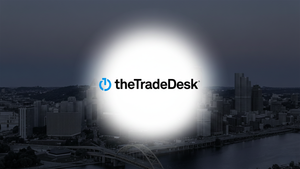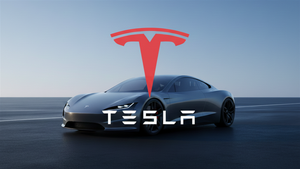
In an increasingly volatile global economy, the consumer staples sector stands as a bedrock of stability, providing essential goods that remain in demand regardless of economic headwinds. Two titans within this crucial industry, Procter & Gamble (NYSE: PG) and Costco Wholesale Corporation (NASDAQ: COST), exemplify robust business models that not only weather economic fluctuations but often thrive within them. Their distinct yet equally effective strategies offer a fascinating study in resilience, making them key players to watch as markets navigate periods of inflation, supply chain disruptions, and changing consumer behaviors.
This article delves into the core strengths and strategic advantages that underpin P&G's diverse brand portfolio and Costco's unique membership-based warehouse model. By examining how these companies consistently deliver value and maintain consumer loyalty, we can better understand their sustained performance and broader implications for the consumer staples landscape.
The Enduring Power of Everyday Essentials
The ability of Procter & Gamble and Costco to consistently perform, even as other sectors face significant challenges, is rooted in their fundamental approaches to meeting consumer needs for everyday essentials. Their business models are designed to be inherently defensive, proving that consistent demand for household goods and bulk savings can create formidable economic fortresses.
Procter & Gamble (NYSE: PG) operates a sprawling "House of Brands" strategy, a testament to diversification and targeted market penetration. With an extensive portfolio spanning 10 core categories—including Fabric Care (Tide, Downy), Home Care (Dawn, Febreze), Baby Care (Pampers), Feminine Care (Always, Tampax), Hair Care (Pantene, Head & Shoulders), Skin & Personal Care (Olay, Old Spice), Oral Care (Crest, Oral-B), Personal Health Care (Vicks, Pepto-Bismol), and Grooming (Gillette, Venus)—P&G reduces its reliance on any single product line. This strategy allows the company to cater to a vast array of consumer segments globally, utilizing tailored marketing and innovation to drive growth. P&G's commitment to research and development ensures a continuous pipeline of superior products, packaging, and brand communication, which is crucial for maintaining competitive edge and consumer preference. Its operational excellence and financial discipline, underscored by over 60 consecutive years of dividend increases, provide a strong buffer against market volatility. During the Great Recession (2007-2009) and the COVID-19 pandemic (2020), P&G's stock demonstrated remarkable stability and rapid recovery, showcasing its fundamental resilience. The company's recent performance, including a 2% increase in net sales and 3% organic sales growth in the second quarter of fiscal year 2025, further reinforces the robustness of its core businesses amid ongoing inflationary pressures and global supply chain challenges.
In contrast, Costco Wholesale Corporation (NASDAQ: COST) champions a distinct membership-only warehouse club model. This model strategically attracts customers who pay an annual fee for access to bulk goods at exceptionally low prices, appealing to value-conscious families, small businesses, and those seeking convenience. The strength of this model lies in its predictable and robust membership-driven revenue, which contributes significantly to the company's operating profit—approximately 65% of its operating profit, amounting to roughly $4.2 billion annually as of 2023. This fee structure cultivates fierce customer loyalty, evidenced by an impressive renewal rate of around 92% in the U.S. and Canada. Costco's generic competitive strategy is one of aggressive cost leadership, achieved through efficient bulk purchasing, a curated selection of SKUs (stock-keeping units), streamlined warehouse layouts, minimal advertising spend, high employee productivity, and centralized procurement. Product markups are intentionally kept low, typically between 10% to 15%, ensuring that savings are passed directly to members. The success of its Kirkland Signature private label further enhances customer trust and allows for greater margin control. Costco's model supports rapid inventory turnover and high sales volumes, contributing to strong revenues despite low selling prices. This combination of membership loyalty and unbeatable value positions Costco as a defensive outlier, with its stock historically outperforming during economic downturns and inflationary periods, as consumers increasingly seek to maximize their purchasing power. In fiscal year 2024, Costco generated annual sales of $254.45 billion and a net income of $7.37 billion, with December 2024 net sales up 9.9% year-over-year, showcasing its continued growth and resilience.
Winners and Losers in the Consumer Staples Arena
In the ever-evolving economic landscape, where inflationary pressures and shifting consumer sentiment often dictate market performance, certain companies are inherently better positioned to emerge as winners. Within the consumer staples sector, Procter & Gamble (NYSE: PG) and Costco Wholesale Corporation (NASDAQ: COST) stand out as prime examples of businesses engineered for resilience and sustained success, even as others falter.
Procter & Gamble's status as a perennial winner is intrinsically linked to its formidable portfolio of trusted, household brands. Names like Tide, Pampers, Gillette, and Crest are not merely products; they are ingrained parts of consumer routines, commanding loyalty and, critically, pricing power. During periods of economic strain, while some consumers may "trade down," P&G's brand equity allows it to strategically implement price increases to offset rising input costs, often with minimal long-term impact on market share. This ability to protect margins through strong brand perception, coupled with relentless innovation in product superiority and packaging, ensures P&G remains a go-to choice for essential items. Furthermore, the company's continuous pursuit of operational efficiencies, such as its "Supply Chains 3.0" initiative, helps to mitigate macroeconomic pressures, reinforcing its strong balance sheet and enabling consistent shareholder returns through dividends.
Costco's membership-based model similarly solidifies its position as a winner, particularly when economic uncertainty drives consumers to seek maximum value. The annual membership fee, a remarkably stable and predictable revenue stream, accounts for a substantial portion of Costco's operating profit—approximately 65%, or roughly $4.6 billion in 2023. This recurring income allows the company to operate on razor-thin margins on its products, passing significant savings directly to members. The appeal of bulk purchasing at competitive prices intensifies during inflationary periods, drawing in new members and strengthening the loyalty of existing ones, as evidenced by high renewal rates around 90-93% in the U.S. and Canada. This value proposition, combined with efficient operations and a well-regarded private label brand like Kirkland Signature, positions Costco as an indispensable resource for budget-conscious shoppers and a defensive powerhouse in its own right.
Conversely, the broader consumer staples sector is not without its potential losers when economic tides turn. Companies with weaker brand recognition or those offering solely premium products may struggle as consumers become more price-sensitive and readily "trade down" to private labels or cheaper alternatives. Businesses heavily exposed to volatile input costs (commodities, labor, transportation) without the requisite brand strength to pass these costs onto consumers will likely see their margins severely compressed. Furthermore, smaller, undifferentiated brands or those with less efficient supply chains may find it increasingly difficult to compete with the economies of scale and operational prowess of giants like P&G and Costco. The crucial distinction here is between the defensive, essential nature of consumer staples and the more vulnerable consumer discretionary sector, which includes non-essential goods and services and typically bears the brunt of economic downturns.
Despite their formidable positions, both P&G and Costco face their own competitive challenges. P&G must contend with the rise of agile, direct-to-consumer (DTC) brands that can quickly adapt to niche preferences, as well as the ongoing shift of some consumers towards private labels and value options, particularly in certain international markets like Greater China. Costco, meanwhile, navigates intense competition from other warehouse clubs (Sam's Club, BJ's Wholesale Club), traditional retailers (Walmart, Target), and e-commerce behemoths like Amazon (NASDAQ: AMZN), whose Prime membership offers a compelling alternative. Both companies must continuously innovate, maintain operational efficiency, and adapt to evolving consumer expectations, including the increasing demand for e-commerce integration, to sustain their winning streaks in a dynamic global market.
Industry Impact and Broader Implications
The distinct, yet remarkably effective, business models of Procter & Gamble (NYSE: PG) and Costco Wholesale Corporation (NASDAQ: COST) not only secure their individual market positions but also cast long shadows across the broader consumer staples industry, influencing competitors, shaping regulatory dialogues, and reinforcing historical patterns of resilience. Their strategies are deeply intertwined with, and often drive, prevailing industry trends such as premiumization, value-driven consumerism, sustainability, and digital transformation.
P&G’s unwavering focus on brand superiority and innovation, backed by annual R&D investments of around $2 billion, allows it to lead the charge in consumer trends like health-conscious living and sustainable packaging. By consistently delivering "irresistible superiority" in product performance and communication, P&G influences competitors like Unilever (NYSE: UL), Colgate-Palmolive (NYSE: CL), and Kimberly-Clark (NYSE: KMB) to intensify their own R&D efforts and marketing strategies. When P&G utilizes strategic pricing to maintain organic sales growth amid flat volumes, as observed recently, it forces rivals to keenly analyze their own pricing power and value propositions. This dynamic can either spur innovation across the sector or, if mismanaged by competitors, lead to market share erosion. The ongoing shift towards eco-friendly solutions, like recyclable packaging for brands such as Head & Shoulders, also sets a benchmark for industry best practices, often preempting or aligning with evolving environmental regulations.
Costco’s membership-driven model similarly creates significant ripple effects. Its formidable efficiency in offering bulk goods at ultra-low prices exerts immense pressure on direct competitors like Walmart’s Sam’s Club and BJ’s Wholesale Club (NYSE: BJ), forcing them to constantly refine their value propositions and membership benefits. Beyond warehouse clubs, Costco’s ability to divert customer traffic, particularly from traditional grocery retailers and supermarkets, compels these players to rethink their pricing strategies and operational efficiencies, potentially squeezing their already thin margins. The "treasure-hunt" shopping experience, coupled with the strength of the Kirkland Signature private label, reinforces the resilience of physical retail, challenging the narrative of an exclusive shift to e-commerce, while simultaneously necessitating continuous investment in digital platforms to meet omnichannel consumer expectations.
From a regulatory standpoint, both giants navigate a complex web of compliance. As purveyors of essential goods, they face stringent regulations concerning food safety, product standards, and nutrition labeling. Increasing environmental consciousness translates into stricter rules on waste reduction, sustainable sourcing, and packaging, areas where companies like P&G are actively investing. Global trade policies and tariffs significantly impact their supply chains and pricing strategies; P&G anticipates a $1 billion to $1.5 billion annual cost burden from tariffs, while Costco actively mitigates risks through alternative sourcing. A sustained industry-wide reliance on pricing to offset costs, particularly for essential goods, could draw increased scrutiny from regulators concerned about consumer protection and fair pricing practices.
Historically, the consumer staples sector has consistently demonstrated its "defensive" characteristics, often outperforming the broader market during economic downturns. This non-cyclical demand for everyday essentials leads to stable and predictable earnings, making these stocks attractive during periods of market volatility. Over the past three decades, during four recessions, the U.S. consumer staples sector consistently beat the S&P 500 in the 12 months before and after a downturn, showcasing average returns of 14% and 10% respectively. P&G and Costco embody this historical resilience, leveraging their inherent strengths to buffer against economic shocks and maintain consistent dividend payouts for investors, underscoring their critical role as cornerstones of stability in a turbulent financial world.
What Comes Next: Navigating a Dynamic Consumer Landscape
The future trajectory for Procter & Gamble (NYSE: PG) and Costco Wholesale Corporation (NASDAQ: COST) within the consumer staples sector will be shaped by their ability to adapt to persistent economic uncertainty, evolving consumer behaviors, and ongoing inflationary pressures. While the sector as a whole anticipates a return to a more "normal" state in 2025, both companies are proactively implementing strategies to ensure short-term resilience and long-term growth.
For Procter & Gamble, the immediate future (2025-2026) is characterized by a continued focus on operational efficiency and strategic pricing. The company's significant restructuring plan, which aims to cut up to 7,000 non-manufacturing jobs globally by 2027 to generate $1.5 billion in annual savings, underscores its commitment to productivity. P&G is also divesting underperforming brands and exiting high-inflation markets, doubling down on high-margin categories like Health Care and Grooming. While modest organic sales and EPS growth are anticipated, driven primarily by strategic pricing and product mix, P&G faces the challenge of consumer price sensitivity potentially hindering volume growth. Long-term, P&G's vision centers on continuous innovation in products, packaging, and brand communication, "close-coupling" price increases with enhanced product performance to justify premium positioning. Significant growth opportunities lie in emerging markets and through strategic acquisitions that complement its portfolio, all supported by sustained investment in digital capabilities and supply chain simplification. However, persistent inflation, rising input costs, intense competition from agile DTC brands, and geopolitical risks remain significant hurdles. P&G's ability to balance price increases with volume growth, shifting towards a more even split, will be critical for achieving its long-term mid-single-digit EPS growth target.
Costco, meanwhile, is set to continue its successful playbook of physical expansion and enhanced digital integration. Short-term (2025-2026) plans include opening approximately 28-30 new warehouses annually, with a growing emphasis on international markets. The company is also making substantial investments in its e-commerce platform to improve the digital shopping experience and optimize fulfillment options. A recent membership fee increase, effective September 1, 2024, is expected to provide a significant boost to revenue and profitability through fiscal year 2026, reinforcing its stable, high-margin revenue stream. Long-term, Costco's global growth strategy will increasingly target high-growth regions like China, India, and Europe. Continued technological integration, including AI and machine learning for demand forecasting, will be essential for enhancing operational efficiency and the omnichannel experience. Opportunities abound as economic uncertainties drive more consumers toward value-seeking, and the success of its Kirkland Signature private label provides avenues for higher margins and deeper brand loyalty. Challenges include a currently high stock valuation, which demands flawless execution, and intense competition from other major retailers. Costco's ability to maintain its compelling value proposition and high membership renewal rates while navigating these factors will be paramount.
For the broader consumer staples sector, 2025 marks a "return to normal" from recent volatility, yet a defensive posture remains warranted. Consumers will likely continue to prioritize value, private labels, and smaller basket sizes, prompting brands to increase promotional spending. Geopolitical tensions and potential new tariffs could add cost pressures, while a strong U.S. dollar may impede international growth for globally operating companies. Long-term trends such as sustainability, digital transformation, and health-conscious consumerism will continue to shape product development and marketing. Opportunities exist for companies that can identify and cater to these evolving preferences, with e-commerce and subscription models playing an increasingly vital role. Investors should brace for a period where organic growth might hinge more on volume than pricing, potentially leading to increased M&A activity as companies seek to bolster growth amidst moderated demand.
Conclusion: Enduring Pillars in a Shifting Landscape
In an era defined by economic fluctuations and rapid consumer evolution, Procter & Gamble (NYSE: PG) and Costco Wholesale Corporation (NASDAQ: COST) stand as enduring pillars within the consumer staples sector. Their distinct yet equally potent business models—P&G’s diversified "House of Brands" and commitment to innovation, versus Costco’s membership-driven, value-centric warehouse approach—have proven remarkably resilient, consistently outperforming the broader market during times of uncertainty.
The key takeaway from examining these giants is that sustained success in consumer staples hinges on either commanding premium pricing through unparalleled brand equity and innovation (P&G) or delivering unbeatable value through operational efficiency and a loyal membership base (Costco). Both strategies cultivate strong consumer loyalty, enabling them to navigate inflationary pressures and economic slowdowns with greater stability than many of their peers. Their influence extends beyond their balance sheets, shaping industry trends, challenging competitors to adapt, and necessitating compliance with an ever-evolving regulatory environment.
Moving forward, the consumer staples market is poised for continued evolution, characterized by a heightened demand for value, a growing emphasis on sustainability, and the accelerating integration of digital technologies. P&G will seek to reignite volume growth by coupling innovation with strategic pricing, while Costco will cement its global footprint and enhance its omnichannel offerings to serve its loyal member base. Investors should recognize the defensive nature of these companies, which offer predictable earnings and dividends, making them attractive havens during market volatility.
As the global economy continues to find its footing, watching P&G’s strategic portfolio management and innovation pipeline, alongside Costco’s relentless pursuit of value and global expansion, will provide critical insights into the future direction of the consumer staples sector. Their adaptive strategies and fundamental strengths will likely ensure their continued significance as market leaders, offering both stability and growth potential in the months and years to come.


















